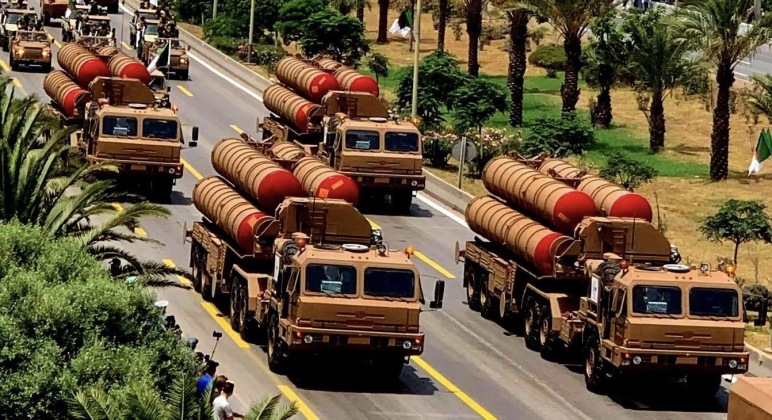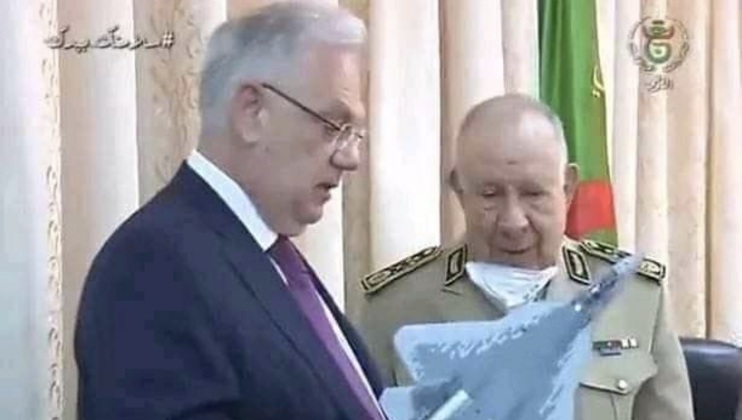News
Africa’s Top Long Range Air Defences Test Combat Readiness: Algerian Aerial Warfare Capabilities Fast Rising

The Algerian Air Force has deployed air defences for live fire exercises, with multiple batteries from what appear to be S-300PMU-2 systems seen active of which at least one fired a long range missile. The exercises come amid an increasingly uncertain international security situation, and as the country has renewed investments in military modernisation with a particular focus on aerial warfare capabilities. The S-300PMU-2 is the most advanced variant of the S-300 developed for the Russian Air Force, with Algeria being the second client for the system after China when it placed orders in 2006 – with deliveries completed between 2008 and 2011. The country is the third largest operator of the system after China and Russia, and acquired S-300s with several hundred of the most capable long range surface to air missiles available at the time the 48N6 – which is fielded in multiple variants. The S-300PMU-2 currently forms the backbone of the Algerian air defence network and is complemented by a wide range of shorter ranged assets such as Pantsir-SM and BuK-M2. The advanced Pantsir variant was reportedly delivered to the Algerian Air Force before being acquired by the Russian Military itself, with Algeria as the country’s second largest client for complete armaments after India consistently given priority for delivery of high end assets.
Although the Algerian Air Force is considered by far the most capable in Africa, with the mainstay of its fighter capabilities formed by a large fleet of over 70 Su-30MKA heavyweight fighters, the fact that it would be heavily outnumbered in the event of a war with NATO has made investment in asymmetric ground based air defence assets particularly critical. The country accelerated efforts to modernise its defences from the early 2010s after its neighbour Libya came under an unprovoked and intensive Western air assault resulting in the execution of its leader and a fall into over a decade of chaos. Of four major Arab Republics which formed close ties to the Soviet Union during the Cold War, Algeria remains the only one at peace with Iraq, Libya and Syria all suffering considerable instability in the aftermath of large scale Western attacks in the 2000s and 2010s.
Major U.S.-led military exercises in North Africa from June 2021 carried out on an unprecedented scale simulated fighting against an adversary geographically matching Algeria’s location, and with air defence capabilities very closely resembling those fielded by Algeria including Russian built S-400 missile systems. Algeria has long been reported to field the S-400, which it is widely suspected to have received in the 2010s, although the country has been among the most secretive on the continent regarding its arms acquisitions meaning they are often confirmed to be in service only after being seen on the ground. Indeed, this was the case in the latest exercises where the Chinese ELINC CHL-906 electronic warfare system made its very first appearance in the country confirming its sale. The outwardly identical launch vehicles used by the S-300PMU-2 and its direct successor the S-400, however, has made visual confirmation of a delivery extremely difficult.

Algeria reportedly signed a major arms deal with Russia in 2021 to acquire $7 billion worth of new equipment – an amount which would hardly be unprecedented after a deal valued at $7.5 billion was signed in 2006 for new assets including the S-300s. New aerial warfare assets are expected to be at the centre of the arms package in order to respond to the proliferation of fifth generation fighter aircraft among NATO states – as well as the United States’ development of a sixth generation fighter expected to be operational around 2030. There have been widespread reports and multiple indications that Russian Su-57 fifth generation fighters will be part of the arms package and delivered in the latter half of the decade, by which time they will integrate new Saturn 30 engines for a much improved flight performance. By that time production lines in Russia are expected to have transitioned to producing the significantly enhanced Su-57M variant, which has sufficient endurance to strike targets across much of Europe and to perform air defence duties even from bases in southern Algeria. The Su-57 has recently been combat tested extensively in the Russian-Ukrainian War, including in air to air and air defence suppression roles, and is the only fifth generation fighter class to have been used in such operations. More S-400s, and acquisitions of the latest S-500 air defence system designed to provide strategic defence against high end targets such as satellites and stealth bombers, are also speculated to be part of the package. Algerian state revenues have notably increased significantly since the 2021 deal was reportedly signed due to a sharp and lasting increase in fossil fuel prices in early 2022, although how this may further impact investments in modernising aerial warfare capabilities remains uncertain.












